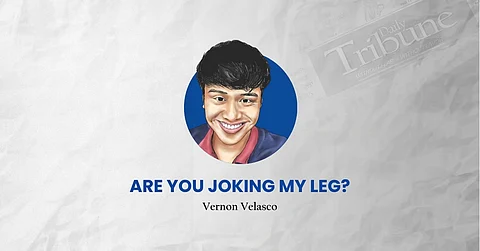
- NEWS
- the EDIT
- COMMENTARY
- BUSINESS
- LIFE
- SHOW
- ACTION
- GLOBAL GOALS
- SNAPS
- DYARYO TIRADA
- MORE

DELHI — Nineteen years ago, Rajiv Bahl stood in Switzerland. He needed some medical tests. One-hundred twenty francs. Roughly $130. The same test costs a few dollars here — an obscene fraction. Hundreds of times the reach.
That gap would define two decades of Indian medicine, from which the world learns that scale is the deadliest intervention, driven by the vulgar physics of the country’s 1.4 billion people. The choice is brutal — make healthcare cheap or watch people die?
The office of the secretary of the Department of Health Research is drab, fluorescent, not the stuff of rebellion. But the ambition is of someone who knows the clock is louder in India than anywhere else.
The country leads the world in digital financial transactions. Mr. Bahl wants AI and digital health to do for medicine what fintech did for cash.
The list of problems is long: tuberculosis, anemia, diabetes. Children get sick before learning to walk. Anemic mothers before their babies are born.
Prime Minister Narendra Modi vowed tuberculosis gone by 2025. Laughable? Maybe. Audacious?
Mr. Bahl leans in, eyes sharp, mind ticking. He reached for history. 2003. WHO promised HIV treatment for 3 million people by 2005. Impossible, everyone said.
By 2007 it was done: 3 million lives. Against the odds.
“TB is no different. Modi’s announcement is a motivation. Even if it takes longer than 2025.”
When John F. Kennedy said he would put a man on the moon, did the rockets exist? The computers? Leadership sets impossible targets, and then the impossible becomes the only path to survival.
Mr. Bahl’s mania for the number (a few dollars in Delhi, 120 francs in Geneva) is the crack in the wall through which India plans to shove its future.
The pandemic was a pressure test. The Indian private sector were retooled overnight. Textile mills started stitching masks instead of saris. Car plants pretending to be ventilator factories. Biotech firms chasing a virus they’d never met.
Covaxin: entirely homegrown. The virus isolated at a public lab in Pune, while a company figured formulations in Hyderabad.
Animal studies. Human trials. Finally, factories were churning out vials.
The plan, Mr. Bahl said, is to hard-wire that improvisation and make the partnership with the private sector permanent instead of a mere crisis reflex, like the next emergency won’t wait for the Indians to remember how well they worked together.
That’s the lesson hanging in the air for Manila too. The next pandemic, superstorm, the next slow bleed of rabies, suicide, obesity, none of it pauses while the government convenes another task force.
We wait. For storms to pass, for the cough to go away, where the pause between the first symptom and care can bankrupt a family before the fever breaks.
Until Manila treats hesitation like the disease it is, the real epidemic will never end.
